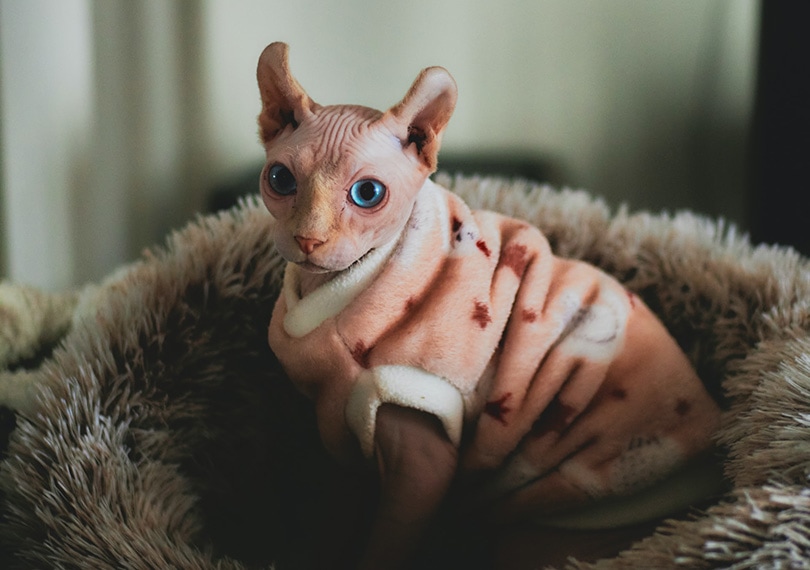
Click to Skip Ahead
Note: This article’s statistics come from third-party sources and do not represent the opinions of this website.
Despite the first impression that felines give us, cats are more than the aloof, uninterested personas that they exude. To prove it, we compiled this list of cat statistics filled with facts about cat ownership, feline health, and things you never knew you needed to know. You’re bound to find something to prove to your dog-loving neighbors how awesome your feline best friend is!
The 15 Cat Statistics
- 85% of cats adopted during COVID-19 are still part of their new families.
- 33% of cat owners are millennials.
- 55% of millennials consider their cats their children.
- 37 million US households have cats.
- The state with the highest percentage of cat owners is Vermont.
- Approximately 3.2 million cats end up in U.S. animal shelters a year.
- About 100,000 cats that enter shelters are returned to their owners.
- The purchase of pet insurance has increased by 21.7% since 2021.
- Domestic cats can live between 10 and 15 years or more.
- Heart disease is a common cause of sudden death in cats.
- Feral cats produce 80% of the kittens in the U.S. a year.
- There are more than 600 million cats in the world.
- Up to 50% of a cat’s day is spent grooming.
- There are just as many left-pawed cats as right-pawed ones.
- Cats have 230 bones in their bodies.

Overall Cat Ownership Statistics
With millions of cats around the world, there are more than a few surprising facts about owning cats. Here are a few trends about the people who own cats, the generation who favors them the most, and the places where felines are even more popular than dogs.
1. 85% of cats adopted during COVID-19 are still part of their new families.
(ASPCA)
With so many families having more time at home due to COVID-19 quarantines, the increase in pet adoptions led to concern about how long the newly adopted animals would stay in their new homes.
However, 85% of the cats adopted are still enjoying their new homes! Better still, their new families don’t intend to let them go.
2. 33% of cat owners in 2021 are millennials.
(APPA)
Among all the cat owners in 2023, millennials make up 33% and are the most likely generation to have a feline family member. Baby boomers come in second at 24%, with Gen X close behind at 16%.
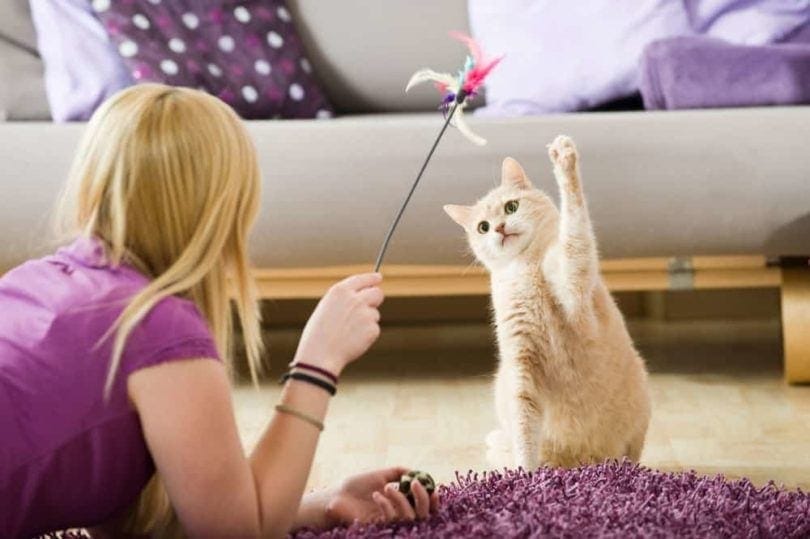
3. 55% of millennials consider their cats their children.
(AVMA)
Most pet owners consider their furry friends as part of their families. Millennials take this a step further. Not only is this generation more likely to own cats in the first place, but they also see their beloved felines as their children.
4. 37 million U.S. households have cats.
(AVMA)
Although cats aren’t the most popular pet — that honor goes to canines — they’re still incredibly common additions to American households. 37 million households have at least one cat, a number that increased due to COVID-19.
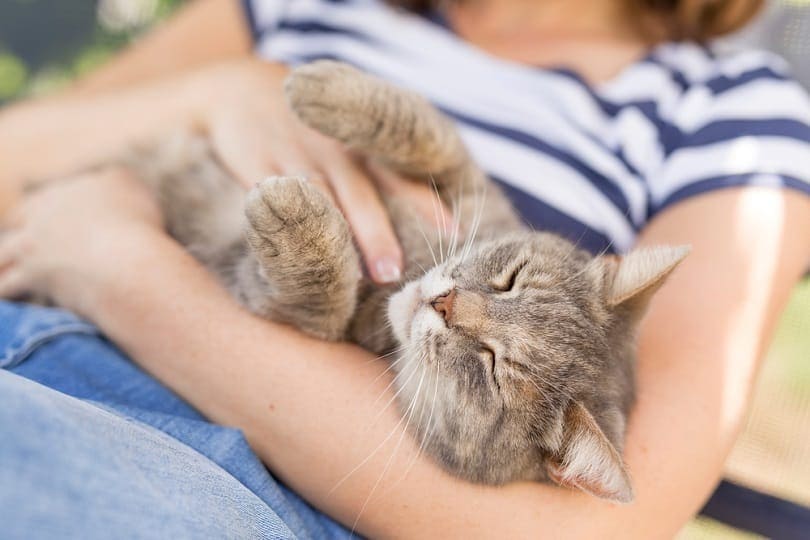
5. The U.S. state with the highest percentage of cat owners is Vermont.
(World Population)
Unlike other places where dog owners outnumber cat owners, Vermont is one place where the cats rule the house. 70% of Vermont residents own pets, and 45% of them are cat lovers.
Statistics for Cats in U.S. Shelters
The size of the U.S. alone gives cats, both domesticated and feral, plenty of space to roam. With the number of cats on the streets and the ones that families can no longer afford to keep, many felines end up in shelters. It’s no surprise that there are several statistics covering the shelters that take in cats.
6. Approximately 3.2 million cats end up in U.S. animal shelters a year.
(National Library of Medicine)
Both feral and domesticated cats can find their way into shelters at some point in their lives. In the U.S., strays and abandoned housecats are common arrivals and often become permanent guests. Of the cats that end up in shelters, 66% are eventually adopted.
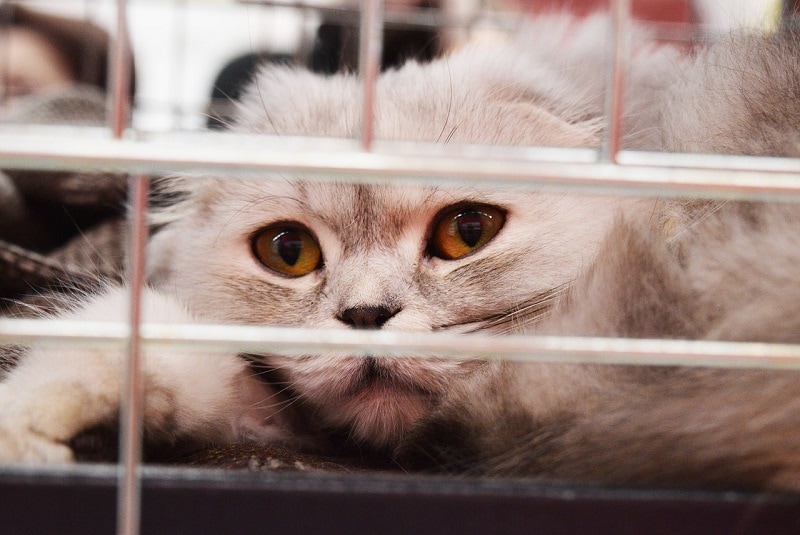
7. About 100,000 cats who enter shelters are returned to their owners.
(ASPCA)
Although this number is less than the annual number of cats that find their way into shelters, it’s heartening to know that so many cats find their way home again. It goes to show how important collars and microchips are for our felines.
Cat Health Statistics
Like other pets, cats are our responsibility. Their health depends on us, and keeping them well-fed and loved is our biggest priority as cat owners. Here are a few trends about feline health.
8. The purchase of pet insurance has increased by 21.7% since 2021.
(naphia)
With the growing number of new cat owners, it’s no surprise that pet insurance is one of the purchases that have increased. It’s good to know that all the newly adopted felines are loved in their new forever homes!
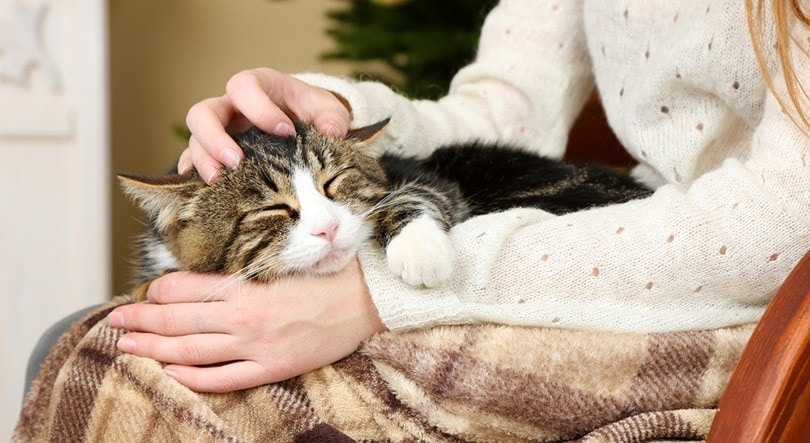
9. Domestic cats can live between 10 and 15 years or more.
(PetMD)
Although outdoor cats have a lower life expectancy, indoor cats can live for a decade or more, if not longer. There are exceptions to the rule, and some cats can live much longer. Others, housebound or not, might pass away earlier due to age-related diseases or other health issues.
10. Heart disease is a common cause of sudden death in cats.
(Pet Health Network)
Feline cardiomyopathy and heartworms are ailments that don’t always show themselves unless an in-depth physical examination is done on your cat. Even for healthy cats, the onset of these heart conditions can be sudden and fatal.
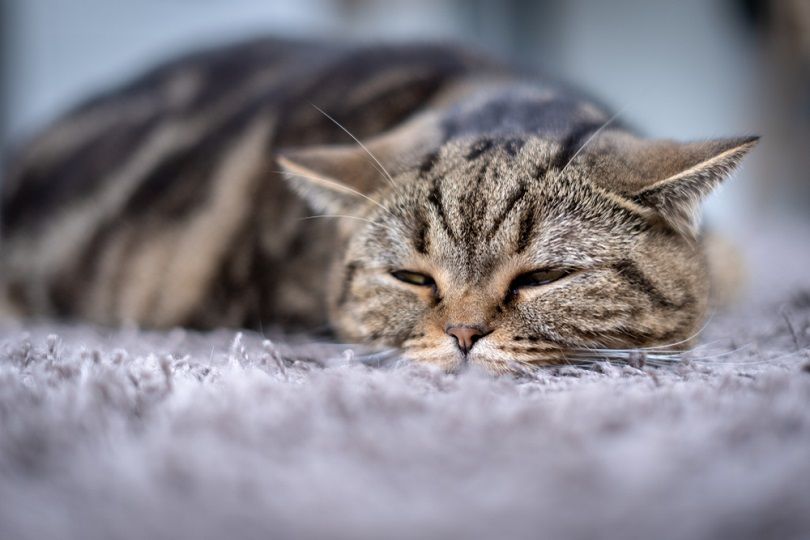
Feral Cat Statistics
Although stray cats are familiar with people and are often lost or left behind when their families move, feral cats have no trust in humans. They make up the majority of unadoptable cats around the world.
11. Feral cats produce 80% of the kittens in the U.S. a year.
(Humane Society)
Since feral cats are so difficult to pin down due to their wariness of humans, most aren’t spayed or neutered. In fact, of the 30–40 million community cats — that includes both strays and feral felines — only about 2% are “fixed.” Due to the sheer number of feral cats that can’t be adopted and their kittens, euthanasia rates are incredibly high in areas with a large population of community cats.
Interesting Cat Statistics
While dog owners gloat about their puppies learning all sorts of new tricks, they always forget that cats have quirky personalities too. They’re not, by any means, as shallow as their quiet arrogance first suggests. The following stats will show you why.
12. There are more than 600 million cats in the world.
(World Atlas)
It’s difficult to be 100% accurate about the number of cats in the world, especially when so many of them are feral. However, 600 million is still an impressive number.
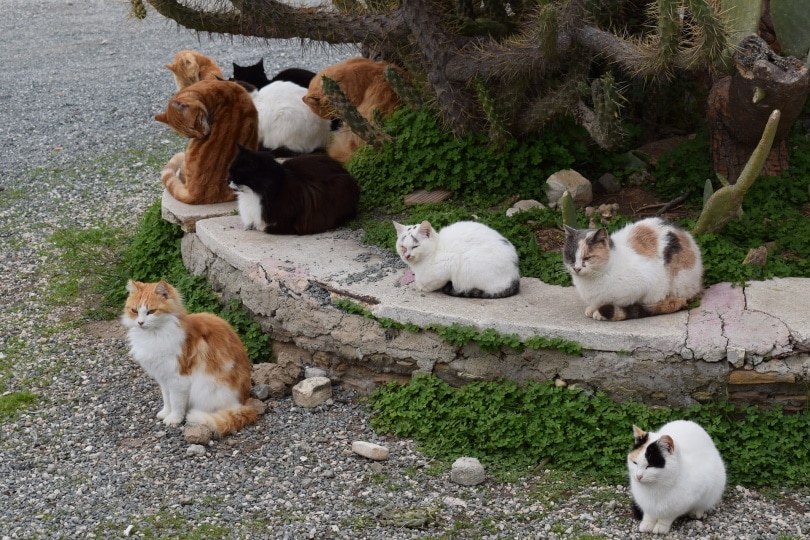
13. Up to 50% of a cat’s day is spent grooming.
(Cornell)
If you think that your human roommate spends too long preening in the bathroom, they’ve still got nothing on your beloved cat. Felines will clean their fur every day for at least 5 hours. This doesn’t include any human help that you give them, so they’ll still be delighted to settle in your lap for a lengthy session with their favorite brush.
14. There are just as many left-pawed cats as right-pawed ones.
(AMCNY)
Like humans, cats have a dominant side that they prefer using and just as many are left-pawed as right pawed. Although sex doesn’t influence the dominant paw in dogs, female cats are more likely to be right pawed.
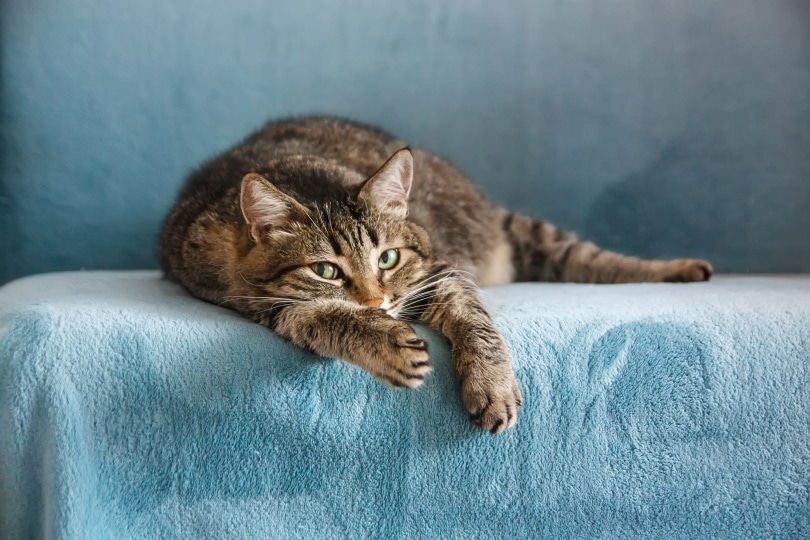
15. Cats have 230 Bones in their bodies.
(Vetcheck)
In comparison to cats, humans only have 206 bones. Considering how inflexible some of us are, it’s no wonder that cats manage to fit themselves into narrow spaces with the few extra bones in their spine.
Frequently Asked Questions About Cats
There are many frequently asked questions from new cat owners and people who are just curious about why cats are so popular. These queries range from the simplistic to ongoing debates about the type of people who like cats the most.
Why do cats purr?
Domestic cats purr for various reasons. It’s one of the ways that they show their innermost feelings. They purr when they’re happy, talking to their kittens, or self-medicating to manage pain. Veterinary visits might also prompt a burst of purring as your anxious feline tries to quell their nerves. (PetMD)

Why do cats hate water?
While it may seem like all domestic cats despise water with a passion, some breeds, like Bengals and Maine Coons, enjoy playing in it.
Most cats dislike water because of how uncomfortable it makes them feel, and it’s easy to see why. If they fall in a body of water, their wet fur weighs them down since they don’t have waterproof fur like some dogs. (GilbertsvilleVet)
Are cat lovers smarter than people who adore dogs?
For pet owners, the debate between cats and dogs is a never-ending one. In the end, it seems that our pet preferences come down to our personalities. While dog owners tend to be more outgoing and gregarious, cat lovers are more reserved and conscientious. If that isn’t enough, cat owners have even scored higher on intelligence quizzes. (HuffPost)
- Related Read: Are Cats Smarter Than Dogs? Here’s What Science Says
How many cats do most people own?
On average, cat owners in the U.S. own an average of 1.78 cats. Although the number varies depending on the household and available space, 26% of households own at least one, while other families can have many more. (AVMA)
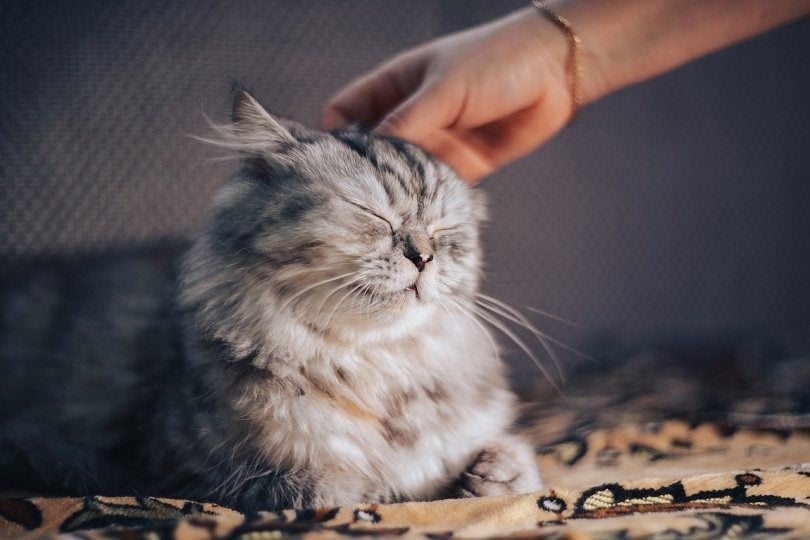
Why do cats sleep so much?
First and foremost, cats are hunters, and despite their domestication, they’ll always be wild at heart. These wild tendencies show themselves in their playful natures and the hunting of each other, your unsuspecting feet, and their favorite toys.
After a chaotic play session, cats will take a power nap to conserve and restore their energy so they can start their favorite game all over again. (PetMD)
Are cats nocturnal?
Many people believe that cats are the most active at night, but cats are actually crepuscular. This means they’re most active at dusk and dawn. They’ll spend all day snoozing in the sun and spend their evening getting into mischief. Afterward, they’ll pin down your feet as you sleep, only to wake you up in the morning with more playful antics. (Animal Humane Society)
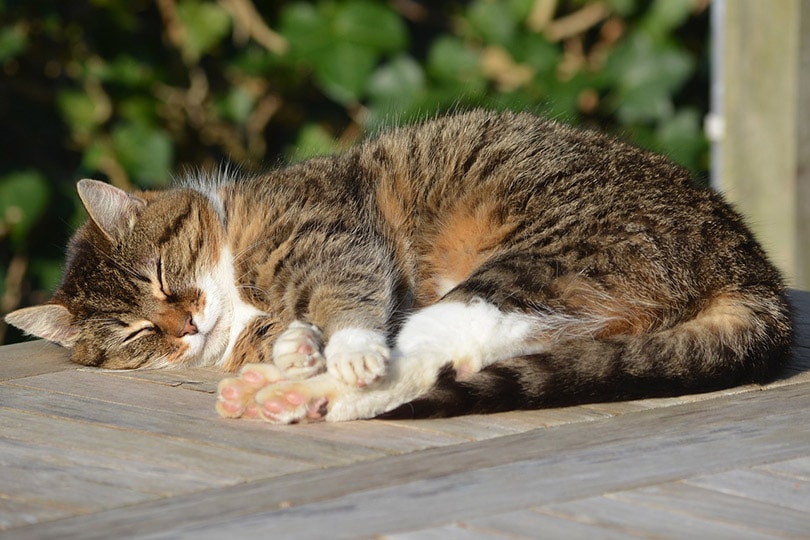
Final Thoughts
Although popular among pet owners, cats often fall short of meeting the amount of love that their canine companions receive. To truly understand our feline friends, we need to look beyond their secretive and cautious natures.
As true cat lovers, we know better than to believe that cats are as aloof as they want to appear. These stats should help convince our dog-loving friends that cats are just as lovable and endearing as their canine siblings.
See Also:
- How Far from Home Do Domestic Cats Roam? Facts & FAQ
- UK Cat Statistics All Pet Lovers Should Know
- Australia Cat Statistics All Pet Lovers Should Know
Featured Image Credit: Karpova, Shutterstock




